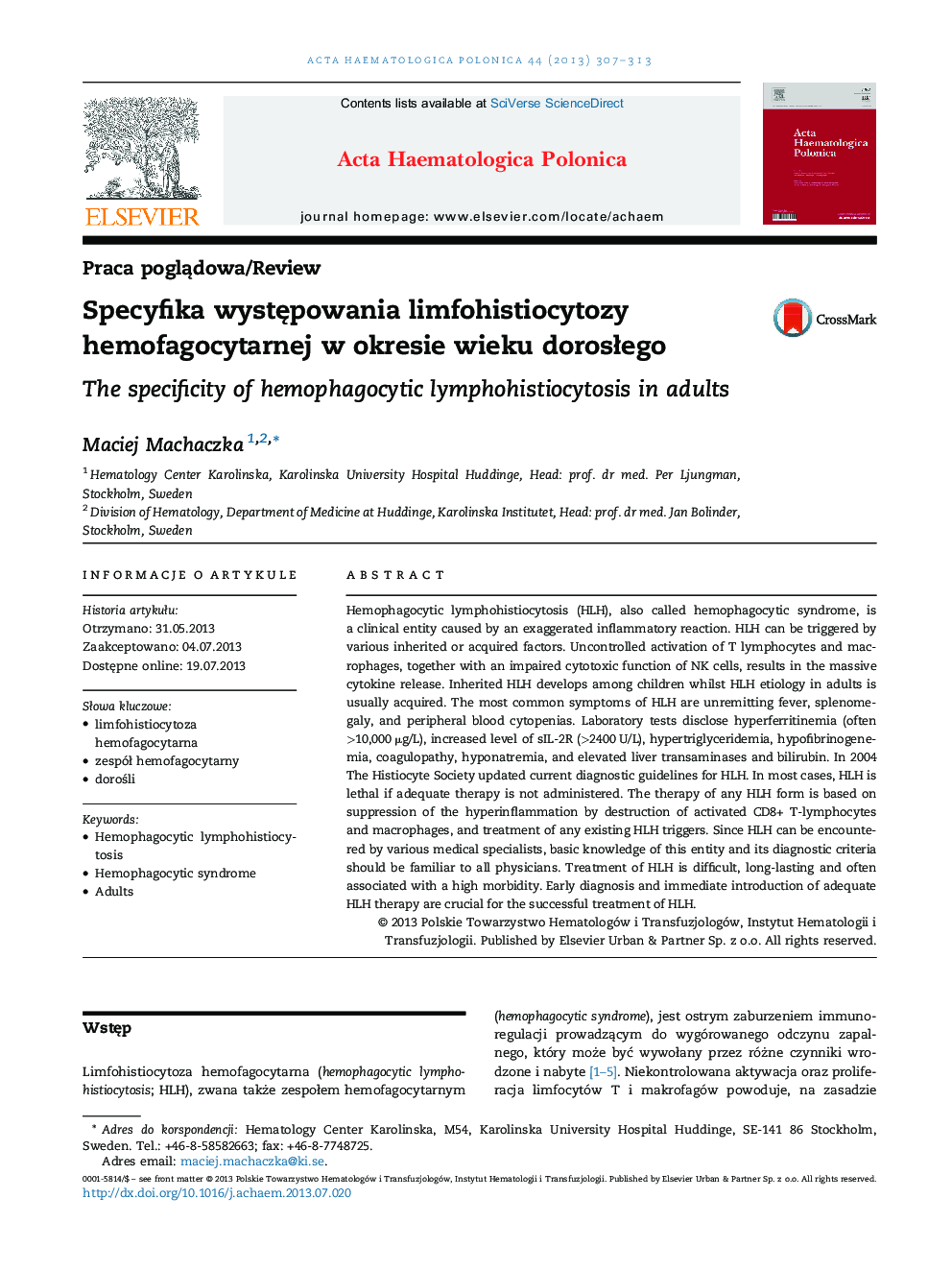| Article ID | Journal | Published Year | Pages | File Type |
|---|---|---|---|---|
| 3328358 | Acta Haematologica Polonica | 2013 | 7 Pages |
Abstract
Hemophagocytic lymphohistiocytosis (HLH), also called hemophagocytic syndrome, is a clinical entity caused by an exaggerated inflammatory reaction. HLH can be triggered by various inherited or acquired factors. Uncontrolled activation of T lymphocytes and macrophages, together with an impaired cytotoxic function of NK cells, results in the massive cytokine release. Inherited HLH develops among children whilst HLH etiology in adults is usually acquired. The most common symptoms of HLH are unremitting fever, splenomegaly, and peripheral blood cytopenias. Laboratory tests disclose hyperferritinemia (often >10,000 μg/L), increased level of sIL-2R (>2400 U/L), hypertriglyceridemia, hypofibrinogenemia, coagulopathy, hyponatremia, and elevated liver transaminases and bilirubin. In 2004 The Histiocyte Society updated current diagnostic guidelines for HLH. In most cases, HLH is lethal if adequate therapy is not administered. The therapy of any HLH form is based on suppression of the hyperinflammation by destruction of activated CD8+ T-lymphocytes and macrophages, and treatment of any existing HLH triggers. Since HLH can be encountered by various medical specialists, basic knowledge of this entity and its diagnostic criteria should be familiar to all physicians. Treatment of HLH is difficult, long-lasting and often associated with a high morbidity. Early diagnosis and immediate introduction of adequate HLH therapy are crucial for the successful treatment of HLH.
Keywords
Related Topics
Life Sciences
Immunology and Microbiology
Immunology
Authors
Maciej Machaczka,
